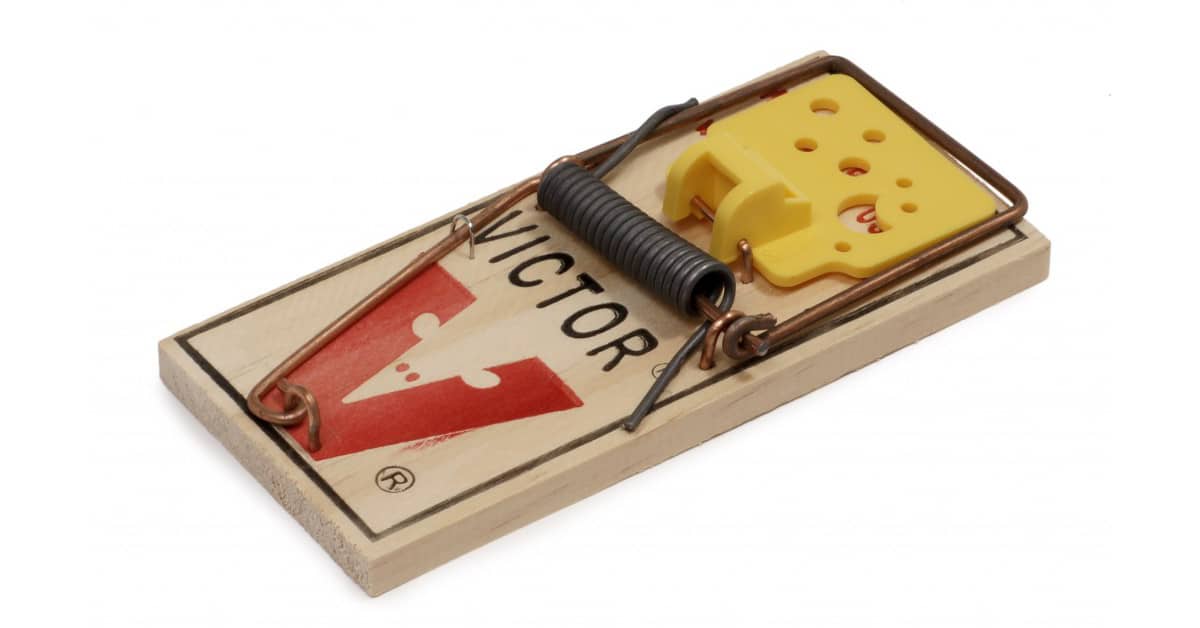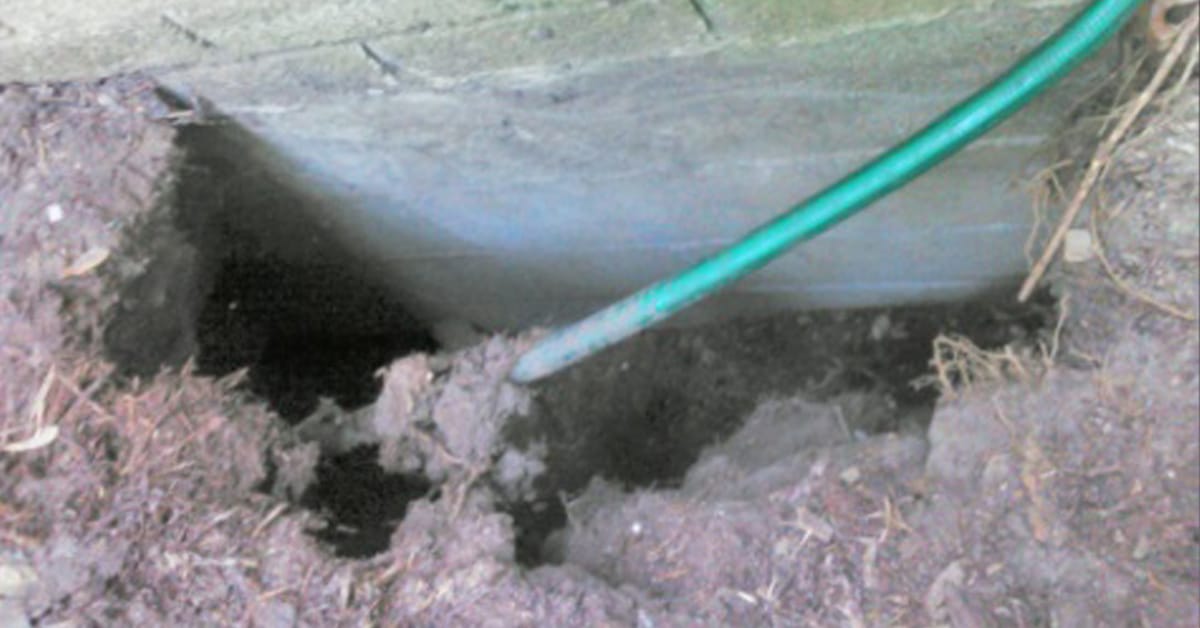Updated: June 17, 2024 Groundhogs may look cute, but groundhog foundation damage is more serious…

Why You Suck at Trapping Mice
Updated: September 27, 2023
Mice have lived alongside humans for thousands of years. They are probably the most common household pest; at one point or another, almost all homeowners will deal with mice in the home.
When homeowners start finding the characteristic signs of a mouse infestation – the droppings, urine stains, nibbled boxes in the pantry – their first reaction is to buy a pack of generic mouse traps, bait them with some peanut butter, and start trapping. Unfortunately, they seldom have the success they hope for; the mice continue to proliferate. Many of these would-be do-it-yourselfers end up contacting a professional company in the end to take care of the problem.
In the intricate tapestry of cohabitation between humans and rodents, mice have perfected the art of infiltrating our homes and disrupting our peace. If you’re a homeowner, it’s almost inevitable that you’ll face a mouse infestation at some point in your life. When the telltale signs of these elusive invaders appear—tiny droppings scattered like confetti, urine stains marking their mischievous path, and gnawed boxes in your once-pristine pantry—the immediate response is often to grab a few run-of-the-mill mouse traps, generously smear them with peanut butter, and set them around like a field of landmines, hoping to curb the infestation.
However, as many soon discover, the mice seem to defy the odds and persist, seemingly impervious to these amateur trapping attempts. Frustration mounts, and in desperation, many eventually surrender to the relentless mouse invaders and call upon professional pest control services for salvation.
The truth is, having a mouse trap is only one piece of the puzzle, and it’s far from the whole solution. Success in trapping mice isn’t just about having the tools; it’s about mastering the technique. To put it simply, you might have the trap, but do you have the right technique? In this blog post, we’ll delve into the three fundamental rules of mouse trapping, shedding light on the common pitfalls and misconceptions that may be sabotaging your efforts to evict these uninvited guests from your home. So, let’s embark on a journey to discover why you might be falling short in your mouse-trapping endeavors and how to turn the tide in your favor.
This is because having the trap does not mean you have the right technique. Let’s review the three fundamental rules of mouse trapping!
How to Set Up A Mouse Trap
There are many different sorts of mice traps on the market. Some of these devices claim to be improvements upon the traditional mouse trap; others take a different approach altogether and actually attempt to live trap the mice instead of Victor-Mouse Trapkilling them.
Each of these traps has its pros and cons, but since people are most familiar with the traditional snap-trap, we will deal with the how to properly use the conventional Victor snap trap. The snap-trap is a brilliantly simple design, consisting of a spring loaded snapper, a small trip pan that can be baited, and a wooden base. When the mouse puts pressure upon the trip pan while eating the bait, the snapper is released, breaking the mouse’s neck. They are easy to bait and simple to use – if used properly.
Here are three tips to keep in mind when mouse trapping – the do’s and don’ts.
1. Place Your Traps Along Established Routes
Mice are creatures of habit. Once they establish a travel route between two locations, they prefer to keep using that same route. It is predictable. It gives them a sense of security. Mice crave this sense of predictability because they have very poor eyesight. They generally like to use routes that take them against a wall or the side of a solid structure. They literally like to have one side of their body rub against the wall as they travel along their route.
Thus, the first tip for mouse trapping is to make sure mouse routes are identified. This is where you want to trap. Many people will try to trap right in the area where they see the most activity. The mice get into a pantry and there are droppings all over, so they set out a few traps in the pantry. That’s common sense, but not the best strategy. Seeing two or three shelves full of droppings does not help you indicate what route the mice took to get up there. A trap set on a pantry floor or shelf can easily be gone around or ignored.
Where are the mouse routes? Think like a mouse. Look at where the droppings are and work your way backward. Remember, mice like to travel with their bodies to a wall. What is the nearest wall to the area where you are finding the droppings? Can you see evidence of mouse urine? Mouse urine sometimes appears as a small, yellow stain, but it is often only visible under a UV light. Smudge marks along the sides of their runways are easier to spot; they look like greasy smudges. Sometimes a mouses route or runway will have droppings scattered along it as well.
If you believe you have identified a mouse’s runway, set your snap trap up along the side of the wall in such a way that the mouse must go over it as it. Sometimes this means buttressing the other side of the trap with a book, block, or box to hold it in place against the wall. When the mouse encounters the trap, it will prefer to continue on its route and keep its side to the wall rather than deviate from its pattern to go around the obstacle.
If the runway area is wider, you can set two traps side by side. Another technique is to place two traps back to back; this is a benefit because you don’t know which direction the mouse will be coming from.Two traps back to back ensures they can trapped regardless of direction.
Bottom line: If you want to not suck at mouse trapping, identify the runways the mice use and then set the traps up on the runways in such a way that the mouse must go over them if it wants to continue on its route.
2. Use a Sufficient Amount of Traps
Here is where most people foul the whole thing up: even if they are able to identify the runways, they do not use a sufficient amount of traps. They put one or two around the basement, maybe one or two in the laundry room or garage and that is usually that. This is probably because mouse traps tend to come in two or four packs, perhaps leading people to believe that 2-4 mouse traps are sufficient.
If you are only laying down 2-4 mouse traps, you are setting yourself up for failure. When I first got into pest control years ago, I was surprised to see veteran wildlife controllers using 20 or 30 traps in situations where my instinct might have been to use much less. Mouse runways can be very long and take various turns; if a mouse is able to avoid a trap set at Point A, it is good to have more at Points B and C. Serious mouse trappers use a lot of traps.
Keep in mind, too, if you use the back-to-back method, you will need to double the amount of traps you have. Suppose you have identified a likely mouse route along the wall of a basement. The basement wall is 40 linear feet and you decide to place a trap every 5 feet. You will thus have 8 trapping points, each consisting of 2 traps back to back. So you’d need 16 traps for this area – and obviously you’d want to trap in a few other areas as well.
So, our second rule for not sucking at mouse trapping is remembering to use a sufficient number of traps.
3. Throw Out Old Traps
Success! You got into the basement or garage in the morning and see that your traps have worked. There is the still, lifeless body of the culprit there to prove it. You are ecstatic; you finally got the little bastard. You empty the trap, dispose of the body, and re-bait and reset it, eager for more kills.
WAIT!
This is another area most people screw up at. While it is not so bad to reuse a mouse trap a single time, reusing old mouse traps consistently is not a good idea. The mice will smell the scent of the trap’s previous victims and be wary of them. Every time you reset a trap that has already killed a mouse, it loses a little bit of its efficacy. People will also reuse old bait again and again, leaving peanut butter on the pan until it is hard. This obviously makes the bait lose its appeal.
When you catch a mouse in the trap, the best thing to do is pick the whole thing up (mouse and trap), wrap it in a plastic bag and throw it away, obviously while wearing gloves. Then replace that trap with a brand new trap and fresh bait. This will ensure the maximum efficacy of each particular trap and ensure that your trapping efforts will not suck as bad.
Mouse Control Using Rodenticide Bait Blocks
If you use the techniques explained above, you should have more luck with your mouse trapping. However, mouse trapping has its own inherent limitations; for one thing, it is never able to eliminate the young in a mouse colony, only the mice that go out to scavenge. Of course, the young may die indirectly as a result of their parent being killed and then being orphaned, but this is not certain. Furthermore, simply killing a few mice will not exclude them from your home. Mouse trapping is best used to monitor for mouse activity.
For a more comprehensive rodent solution, Creature Control recommends using restricted use rodenticide bait blocks placed strategically in secure plastic bait stations. restricted use bait blocks are different from the over the counter Decon sort of products. Creature Control technicians will typically place secure bait stations around the foundations of the home – as well as other affected areas – which will eliminate the existing mouse population. This is followed up by a seal of all entry points to prevent future re-infestations. This may give you a more thorough solution than trapping.
For more information on our mouse control services, please contact us at 1-800-441-1519. You can also visit our mouse page for more information.
Trust Creature Control And Take Control of Your Home Today
If you’ve ever found yourself frustrated by the elusive nature of mice or overwhelmed by a seemingly never-ending infestation, it’s time to upgrade your mouse-trapping skills. At Creature Control, based in Michigan, we’re not just experts in Humane Pest Control Services, Rodent Control, and Wildlife Removal; we’re also here to empower you with knowledge. Don’t let mice overrun your home—discover the secrets to effective mouse trapping today and take control of your living space. Ready to put an end to your mouse woes? Contact Creature Control for professional assistance and advice tailored to your specific needs.


